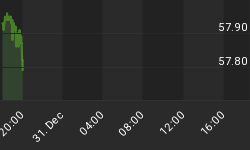The "v" recovery scenario remains intact, at least according to Blue Chip Economic Indicators. The consensus forecast from the stable of economists points to falling GDP in the third and forth quarter before reversing to a 1.4% gain in the first quarter of next year. The survey says the economists are confident of "vigorous growth" by the second half 2002. If so, they must be counting on the consumer to keep up the heavy lifting. They only expect profits to rise 3.2% next year off a low base.
Yet, the consumer is just now winding down from a multi-year spending spree. Despite a reinvigorated refinancing boom, it looks as if the consumer has run out of gas. Here’s the latest:
Consumer debt: The average household credit card balance reached $8,100 last year, up from $3,000 in ’90. The number must mean something because card delinquencies recently hit a 29-year high. Late payments for car loans are rising and more than 1 in 10 Federal Housing Administration loans is past due. Maybe that's why consumers are cutting back on borrowing. Consumer credit outstanding hardly changed in August and the July figure was revised lower. This is an abrupt change from months (years!) past. It’s hard to believe the consumer can turn this situation around in just a couple of quarters.
Retailers: Same store sales could drop double digits in September, perhaps marking the worst monthly performance since World War II, according to a Merrill analyst. Certainly not all of that decline was in the cards before Sept. 11. However, mall traffic slowed by more than 9% on Sunday year over year, almost a month after the terrorist attacks. One retail consultant predicts that we’ll see the most promotional Christmas ever.
Layoffs: U.S. companies set a record for firing workers even prior to Sept. 11. Worse, the layoffs have spread well beyond the manufacturing sector and into the service economy. The drop in payrolls was twice as bad as expected.
Home buying: The housing boom is looking haggard. Despite the attractive mortgage rates, the purchase application index has been trending down for a full quarter. The record setting existing home sales in August could prove to be the peak for this cycle. New home sales in August were weaker than expected. It’s no secret that housing and associated purchases have been key in keeping America out of official recession.
Oh sure, the refinancing boom is still intact. Thanks to falling interest rates, refinancing activity just reached its second highest level ever. Yet the bad news above indicates that the consumer is suffering despite the refi windfall. It will be interesting to see if Freddie Mac reports fewer "cash out" financings for the third quarter, where homeowners borrow more against their equity and pocket the proceeds. In the first half of the year, about half of refinancings were cash out deals vs. about 80% last year. But even if cash outs continue, it’s likely more cash will go toward paying down debt and less toward shopping.
It seems lower refinancing rates alone can’t cure the consumer’s ills until some debt gets paid down. After all, a 1% decline in mortgage rates on an $80,000 loan balance will save you about $50 a month. But with the average credit card interest rate hovering around 14%, the finance charge alone on an $8,100 balance is almost $100 a month.
And finally, a note on state budgets. The days of being flush with cash appear over for most state governments. That's because bad news for retail is also bad news for sales tax collections. States dependent on tourism have serious concerns. Already, the governor of Hawaii wants the state to have access to its Hurricane Relief Fund. Slower spending by that sector would act as a drag on the economy since spending by state and local governments accounts for 12% of GDP. Worse, budget pressures could force tax hikes at the state and local level that could mitigate future federal tax cuts.
Maybe the Blue Chippers are right and we'll get our "v" recovery. You just might have to squint to see it.
















